One Name, Two Games: Virtual Magic Kingdom
How one doomed project changed Disney, then came back twice Edition 2 | Last Updated 8 Dec 2021The Great Adventure
So the first stages of development on this new project were now rolling, coming into 1996. The idea was to bring the player into a virtual theme park overrun by villains. Through sheer determination, it was given a tentative green light, both from the executives overseeing it and from the last stakeholder in Walt Disney’s family.
To help tell the last portion at the end of the last part, we briefly pulled from a few new figures in this story. They’ll be vital to the story going forward.
Roger Holzberg started his career after CalArts working in the art department of Steven Spielberg’s underperforming film 1941, followed by Raiders of the Lost Ark. After transitioning into special effects and filmmaking of his own, he got an Academy Award nomination for writing the IMAX documentary The Living Sea, and carried his expertise into a new game studio called Knowledge Adventure.
One of Knowledge Adventure’s investors was Spielberg. Holzberg got to direct him and several of his Hollywood friends in a simulation game called Steven Spielberg’s Director’s Chair. That game, as well as an adventure game called Pyramid: Challenge of the Pharaoh’s Dream, were the last major titles being developed when the company was sold to what eventually became the infamous short-lived Cendant.
Spielberg’s stake meant that final stages of release moved to DreamWorks Interactive, and Holzberg had to choose between moving there full-time, or taking up a recruitment offer at Disney Interactive.
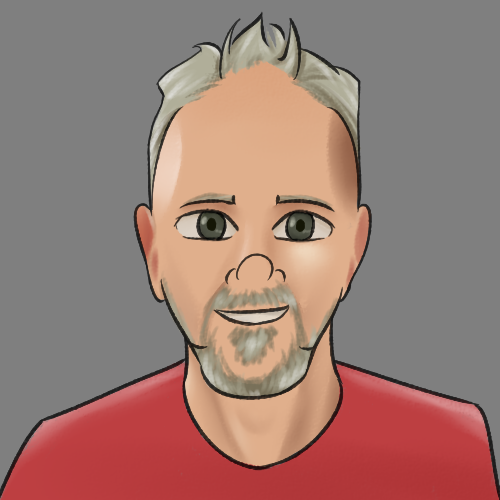
I was going through a divorce at the time, and I was gonna be a single dad with two kids. And Disney was within five miles of both of my kids’ schools. So, choice made!
So that’s how I got there. It was an odd deal too, because part of my agreement was, I had to see through the launches of Spielberg’s Director’s Chair and Pyramid with DreamWorks over the first year of my tenure at Disney Interactive. Which was very odd, to be doing meetings at Disney Interactive, and then be jumping in my car and driving over to Amblin to do a game review for a release of a DreamWorks game.
Tim Decker worked as a student projectionist for the Bijou Theater at CalArts, where he got to handle new animation being compiled by the traveling Spike & Mike’s Festival of Animation.
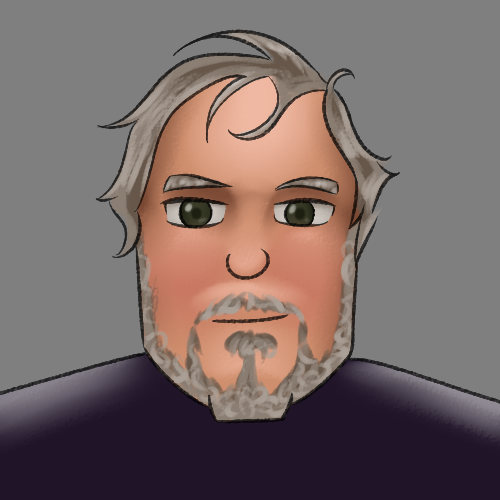
A lot of guys went to Hanna-Barbera because of those guys and – I think it was Spike Decker – he was a trip. I got to talk to him a lot about what they’re showing, before they put the show on, and how they wanted to do things, and we’d watch the whole thing. It’s pretty wild.
In addition, he would get a lucky first look into the Disney corporate ecosystem, well before most of the other players in this story could envision their careers going in the direction they did. And whether he knew it or not, it would rub off on him.

I was one of eight guys chosen by Disney to come down – they wanted to teach us about the about the more executive side of things in production.
And so I’d go down every Tuesday and Thursday night with seven other classmates, and we’d have coffee or a light dinner with Michael Eisner or Jeffrey Katzenberg or Frank Wells, or John Lasseter came down a couple times. Peter Schneider was over there a couple times with us.
Jeffrey was with us about four or five times, and Jeffrey Katzenberg was, like, scary. I mean, he was… If you’re on his team, you’re amazing. If you were against the man, I would hate to be a studio against that guy. That guy was, like, cut-throat. That guy was, like, crazy.
He told us, he said right out. He said, “You know, we’re the biggest, strongest studio in Hollywood, in the world. We’re going to make a few things that might tank, but I’m not worried about it… because I have animators from the best animation teams in the world, that make blockbuster movies that cover that. But that allows us a chance to try new ideas and try new things.”
Which I thought was really cool of him, I mean… But he was really, seriously a strong, strong-willed man.
After leaping out of CalArts, Decker would gain hands-on animation experience with the Air Force, Murakami-Wolf-Swenson, and Film Roman. He moved from working on The Simpsons to working on Pyramid with Holzberg at Knowledge Adventure. When Roger moved to Disney, Tim was brought along through recruitment.
From the outset, Holzberg and Decker brought legitimacy from two industries to the fresh-faced game team, which would soon settle on the name “Virtual Magic Kingdom” (VMK). Other names thrown around in reference to this project included “Villains’ Night Out” and “Unhappy Endings”, but VMK stuck.
But skill would have to come from other recruits.
Mike Cukar, for his efforts to recruit from ArtCenter, found a man arguably overqualified for his offer.
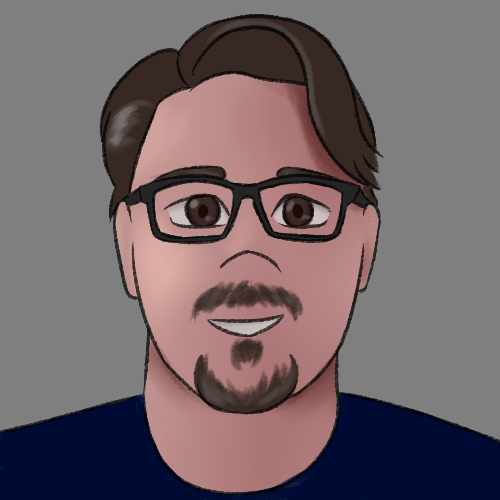
I had worked in television animation, on The Phantom 2040. I was the art director and conceptual designer, so I did all the concept design work. We had Peter Chung (Aeon Flux, Rugrats pilot) come in and do our six main characters, and then I built a world where they would live in. And that was my first full-time gig. I was doing freelance right outside of ArtCenter, doing set design and then product design and whatnot.
Thom Schillinger initially started out as a contractor, but would eventually be hired as 3D art director on VMK. We’ll get to Thom’s expertise in a moment, but let’s introduce a few more team members.
We’ve talked briefly about Gregor Joackim‘s role with assembling pitch boards, but it’s worth bringing up how he came into the industry through more typical means. That is to say, starting at the bottom.
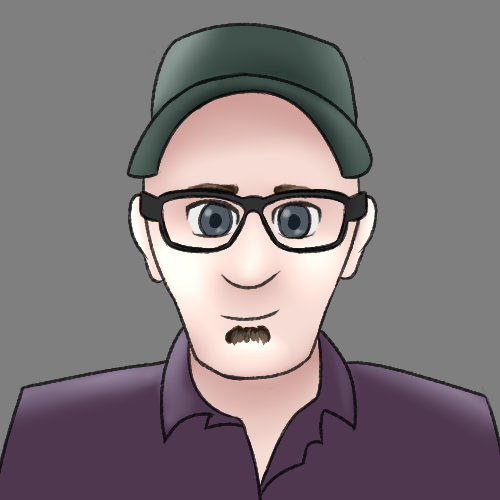
I graduated ‘93, from USC Film Production. And then like everyone else, I graduated thinking that they were buying spec scripts at the airport. (laughs) Didn’t turn out to be the case.
So I was writing spec screenplays, trying to get meetings, and started to prove more difficult than I thought straight out of school. Everyone thinks their student film’s gonna be their calling card that opens doors, but as it turned out, I started to just have to start at the bottom, doing PA work.
I had a friend in high school, Teddy Newton, who was a pretty acclaimed director at Pixar, and he did Day and Night, the animated short. He was working at Disney Interactive at the time, and he was telling me how great it is over there, that a lot of the guys have a film background, and they really fostered creativity.
His work on the pitch boards was impressive enough that he was given a chance to become a writer for VMK. We’ll continue that thread later as well.
Also from ArtCenter – with an additional masters degree from University of Florida – was illustrator Shanna Tellez. She took on key color for the project, and created some stellar artwork in that field. Some of her work is on her newly-updated portfolio site.
On the programming side emerged two figures recruited from Philips Interactive Media – Andy Fisher, previously a small-time porting engineer, and technology director Graham Deane. Both of them figure into very specific areas of the story.
Other key staff artists name-dropped in the interviews included Adolph Lusinsky, Bernard Chang, Robert Miles, Jeff Goldfarb, Tom Breeden, and Terry Coolidge. If you want to follow along, Coolidge has a selection of 3D renders from VMK from his time.
Collecting References
The first major consideration was that – beyond just the need for access to the characters – the nature of the game being set in a Disney park of some description meant that the design team needed references of the real-life parks.
It was easy enough as a Disney employee to drive over to Disneyland and walk the park for a day at a time. In fact, that was a major source of their information.

I got blueprints, which helped, but then they just sent us to the park, and we just photographed everything.
I had to go to the park, take the photos, and then I’d hit a certain point, [where] I’m like, “I don’t know what this is.” And I remember Terry was like, “Just go to the park for the day,” and I’d go down there, and I’d look at the side of the building and take tons of photos.
And this was prior to digital photos, so I had to take the photos, and then get ‘em produced and scanned, and then you had your scrap reference.
This, of course, was also well before anything resembling Google Earth. In fact, as you’ll soon see, Thom and the team were effectively taking on the first real attempt at what Google Street View would eventually be.
However, Disneyland wasn’t the only park they had to consider.

They were trying to deal with the fact that we had four parks. We had two in the United States, one in Paris, and one in Tokyo. And they didn’t want it to be Californian, they didn’t want it to be Florida. So we picked a little bit from all the parks. And kind of – it was a stylized version.
And being right next door to WDI – Walt Disney Imagineering – we had access to their archives. So that was a really cool time, like we – at that point, I was able to walk in and pull original Sleeping Beauty Eyvind Earle paintings, and hold them in my hand. And we were using that as stylization for Fantasyland.
And even back then in the ‘90s, we weren’t allowed to photograph it. There was no cell phones then. We weren’t allowed to take it from the building – you signed in and signed out. So you had to kind of memorize the look, and then run back to your desk and try to redraw that for the Fantasyland stuff.
Then of course, having compiled all the needed reference for the parks, there were the practical questions. How should they be twisted under a villain takeover? How does the player navigate?
Adding Dimensionality
Andy Fisher – who still works at Disney to this day – could not be interviewed in time for this piece, but his colleagues detail his contributions to the project.
The first major one was a first-person navigation engine similar to Myst, but utilizing features like 360-degree rotation, embedded animation, and timed interaction. The rotation effect was inspired by the brand new, but eventually short-lived QuickTime VR panorama engine.
The team dubbed the whole engine “nodes-and-rails”, referring to a mingling of node-based adventure game logic and on-rails sequences.
Each node contained – at the very least – a 2D wraparound of the environment projected around the player. And while just assembling one in 3D would be sufficient, a game with this amount of attention begged to be designed with that curvilinear perspective, as it’s called, in mind.
That’s where Thom’s real skill came in.

Normally when you take a perspective class, you take it from… kind of a pretty ones-and-zeroes, kinda geeky architect, and they teach you vanishing points and straight lines. I started my schooling in Detroit, at CCS, before I finished at ArtCenter. Both car design schools, both the top industrial design schools in the United States. And my perspective teacher was a philosopher, so he used Escher. And I actually saw a sketch that Escher did of his little roly-polys. And he did the grid, and I saw that – I immediately knew that’s what I need to do.
And the thing I used that for, in animation prior to Disney, was it was a quick way to sketch out a three dimensional object. You basically drop this grid underneath your vellum, and you sketched over the top. Your perspective was done, so you weren’t spending your time making something look right, because the perspective grid made it perspectively right. You spent all your time making it look good.
It was all about, you know, “Hey this looks correct, but it’s a bad design?” No, it was all design.
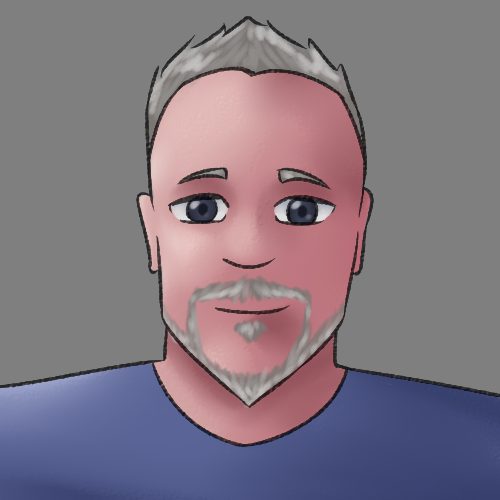
Thom would sketch out these curvilinear perspective grids before he would approach his layout. He’d figure out, “Okay, is this a pan-up or pan-down? Am I going left or right? Do I wanna activate the scene in a particular way?” And he would curve these grids – and he kept them, he had like a library of them, and he’d pull one out. “Yeah, this looks good.” And that was his foundation for his drawings.
We used to take those curvilinear grids and put them in one continuous line, put em in a loop so we created this, like a loop, and we could stick it around our head and turn. It looked like you were looking down a three-dimensional street as it went away from you. I was like, “This is such a great previsualization tool.”
Those drawings helped flesh out several locations in every angle, well ahead of being modeled by the 3D team. Of course, his skills did not stay only with him.

I did curvilinear perspective classes at the end of the day. I would have secretaries, everybody coming into those. Those were really fun. I did those for like, 3-4 months, and taught everybody the technique.
Animating Faithfully
Back with the animation side of things, one of the first milestones of the project in its planning phase was an animation test using traced Maleficent artwork. The result, like much of the game, has been kept in a drawer somewhere. However, it paved the way for the need to bring aboard animators.
Maui Mallard and the Animated Storybook line both faced a similar issue with continuing the novel approach of recruiting Disney feature animators after Aladdin, because they were over the peak of the Disney Renaissance and exceedingly busy. So those games resorted to outsourcing animation, chiefly from Creative Capers.
VMK‘s team, however, had to find another animation house willing to take on additional work. Tim Decker chose to work with Karen Johnson Productions, based in Racine, Wisconsin.

Well, I grew up out there. I grew up in Racine, and that’s where they were at. So when we found them, it was kind of a no-brainer, because I knew what type of people they’d be, and I knew they’d be working hard. And they really put forth 200-percent effort.
They were pretty phenomenal in some of their problem-solving issues with us. We’d be like, “No, you’re gonna make this happen, and you’re gonna do it.” And they’re like, “Well, I don’t think we can do that”, and I said, “You’re gonna do it.” And they would do it.
They were very phenomenal to work with, in the sense that… they tried whatever we gave them, to do. They tried to do the best they could, and they did a really good job, I think, in the end. They were really neat to work with too.

When we were working with Karen Johnson Productions, we did something really fun.
We had a conference table, and they put a big-screen TV, which at that time was a giant box, it was like 2’ deep with the mirror reflectors, and they put it right at the end of the table, so that the edge of the TV was right at the edge of the conference table. And then they bought the same table and the same TV, and put it in Wisconsin at Karen Johnson Productions.
So yeah, it looked like the table went into their room. And I remember this was 1995, and we were like, “This is gonna change everything. You can work remote, people are gonna, you know…”
And here it is, 25 years later, and nobody wants to really do that. COVID kinda forced us to do that.
In their full interviews, Thom and Tim shared some good stories on this front, both with remote work and the occasional business travel.
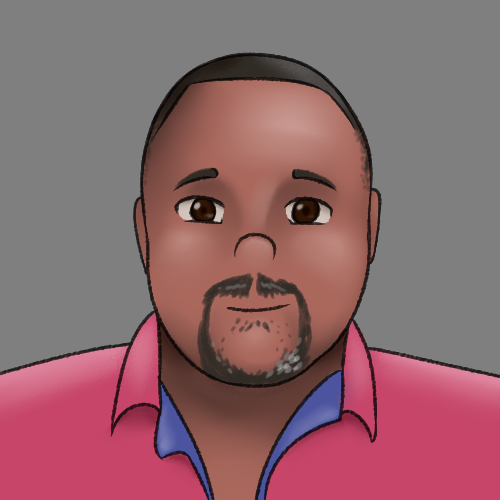
I’m still eating kringle. I order it from O&H [Danish] Bakery still.
Of course, aside from the animation being made and digitized, there was the issue of assembling it for playback in-game, especially for lip-sync. Traditional animation had standardized the exposure sheet (“X-sheet”) to organize cels per frame, but no tool existed to their knowledge to automate importing them into a game.
Andy Fisher bore the brunt of this issue, but came through in his own way.

Paul Meylink worked on the Jiminy Cricket stuff. And me, Paul, and Tom [Ward, KJP animation director] sat down with the original Jiminy Crickets, and we were trying to figure out how we can make this happen. And we ended up separating the heads and the bodies, and putting three-quarter front, three-quarter back, front, and profile.
That was a X-sheeting nightmare, to make sure you had the right head, the right mouth, and everything with the right body and the right movement. And we only had, I think, a series of 10-15 gestures with Jiminy Cricket that we used from the original. And then we had to switch ’em out.
I kept giving [Andy Fisher] the X-sheets and saying, “Man, read the X-sheets. This is how it’s working.”
And he’s like, “Right, right. I don’t have time for that.” (laughs)
And then we sat down, and I said, “Andy, we gotta figure this out.”
And he goes, “What software are you using?” We were using X-Sheet 95.
And Andy goes, “Right. Let me see this.”
I said, “Okay.” He goes, “I’ll see you later.” I said, “Okay.”
He disappeared for, like, four days.
And then he came back, and he had all the programming where it could read our X-sheets, and all the phonemes, and put em in, (snaps) right like that.

I think it may have been the first in the industry. There are a gazillion of them – every application now that runs online syncs a mouth up to dialogue. But I think Andy might have built the first phoneme generator used in games.

The X-sheeting tool was really key to everything, when he did that, when he tied those two softwares together. Because it cut programming time– seriously, cut it into a third of what would have been.
Of course, the animation also had to be done on top of pre-recorded voices. Reportedly, VMK had at least 45 minutes of recorded dialogue, chiefly written by Gregor Joackim. Tim Decker suggested those 45 minutes were just for Jiminy Cricket. Disney’s entire lineup of official voice actors for their characters was put through their paces, their sessions directed by Holzberg.
Holzberg also had another secret weapon at his disposal – his kids. Yes, the ones whose schools’ locations convinced him to join Disney from the beginning. In fact, his son Jackson would eventually be credited for “additional artwork”, which is code for “I borrowed my kid’s doodles and put them in the game”.

My son – who is, believe it or not, over 30 – used to come in after elementary school and sit on the game designers’ laps. They would test the VMK games on him. Seriously. I was so out of the rules, but I was a single dad desperate for daycare. And I would bring my kids in and let them guinea pig with the game designers, artists or whoever.
Refining the Story
The way Joackim recalled the overarching story and premise being developed, Dobson and Kozloff workshopped the first lands of the game well before the pitch was greenlit, let alone any game engine sourced for it.
Dobson took on Fantasyland, while Kozloff worked on Adventureland. The early progression of Fantasyland included two focal props – a magic storybook, from which the happy endings were ripped out, and a magic quill for fighting Captain Hook as the land’s final boss.
When Joackim was brought on as a writer, he had some choice words for the complexities they put in.

I think what I provided to that was a set of fresh eyes, because after you work on something for three years, some of your ideas may even be contradictory.
I said to Terry, “Do we need the magic storybook and the magic quill? It seems like redundance, you know. You really want one macguffin.”
And he’s like, “Ah, but the pen is mightier than the sword.”
And I was like, “Alright, wait, wait, wait, so.”
And then he explained to me that he wanted you to ultimately to duel Captain Hook with a feather. And these are the kind of things that I thought, when Terry said them with a British accent in pitch meetings, they really worked. “Yes, I can see that!” And then when an engineer is sitting there, “and you’re fighting a sword with a feather”, it’s like, that’s when it falls apart.
So, those are the kind of things that I tried to– I was like, “We don’t need a magic feather and a magic storybook. Let’s just go with the storybook.” So it was more of a subtractive process with them.
Not only that, but all of that subtractive work had also corresponded with extra eyes beyond his. We talked about Andy Fisher’s work, but the work was really started by his boss – technology director Graham Deane, who worked at Philips Interactive with him.
At a time when one game died quickly due to lack of technology, and the second game had its own ambitions being tempered, Deane had to be the voice of reason to keep VMK from falling down that same hole.

I was really surprised how late technology came into play. Although nodes-and-rails had been talked about, I’m sure [Graham]’s the one that kinda finalized that and brought in that engine.
Up until then, we were trying to just talk vaguely about it being like Myst and so forth. But when Graham Deane first came in, we had our first meeting with him and Terry and Kyle and myself. We pitched him all the lands. His jaw kinda dropped, and they were talking about technology and he’s like, “That’s like ten engines. There’s no way one engine is gonna do all that. And we go with the nodes-and-rails, you guys are gonna need a lot of plug-in engines.”
After years and millions of dollars, and so much art being developed, for what essentially was a just big pitch at this point, I think it was a wake-up call that like, this is where the rubber kinda meets the road, that this had to be retrofitted to an existing engine, and that might be a little painful of a process.
As a consolation, Joackim was assigned to write the progression of Frontierland himself. Since he was party to that meeting with Deane, and working with the third-party engine they’d eventually license, he was able to keep the scope reasonable for the pipeline. The result was deemed feasible enough to put into production, well before the overstuffed concepts of his seniors.
That put the carefully-assembled production schedule for VMK out of alignment, since Frontierland was supposed to be third in the release cycle. That alone wouldn’t be an issue for a video game, even a large one. But let’s take stock of what the game could’ve been, as planned at the most optimistic stage of development.
The Game as it Stood
The intent behind Virtual Magic Kingdom was to release it episodically, in a sense. Main Street and Fantasyland would be first, followed by Adventureland, Frontierland, and Tomorrowland. The entire game – a full-motion video extravaganza – would use upwards of 10 CD-ROMs.
The game would begin with the player – a special after-hours guest of the Magic Kingdom – entering through the Tokyo Disneyland-inspired front gate, bearing a metal-silhouetted Mickey Mouse design. After exploring the bulk of Main Street U.S.A., the player would encounter the Central Plaza, where a gargoyle atop the flag pole comes to life and signals the villain uprising. Jiminy Cricket becomes your companion as you’re recruited to help fight back against the villains.
Over in Fantasyland, the first landmark would be a large storybook on a tree stump, containing all of Fantasyland’s stories. The player discovers that the happy endings have been ripped out of the book, and they will have to travel to each story’s location in Fantasyland to fix things. Schillinger’s giant overview map of Fantasyland features locations from Snow White, Peter Pan, Pinocchio, Jack & the Beanstalk, Dumbo, Alice in Wonderland, and Night on Bald Mountain.
Frontierland would largely encompass a generic Wild West mining town, plus a mine-cart ride on Big Thunder Mountain to reach the Haunted Mansion. The only familiar character in play was Pecos Bill – stay tuned for more on him.
Adventureland would begin with the Jungle Cruise, its queue area destroyed and stopover points invaded. A pirates’ castle would also be included, presumably with a version of Pirates of the Caribbean familiar to ’90s audiences. Schillinger’s map of Adventureland was merely a proposal, and only a few elements were created for it.
The team never managed to settle on a concrete design for Tomorrowland, beyond early designs for the front gate.
The final battle at the end, however, was planned out from the start.
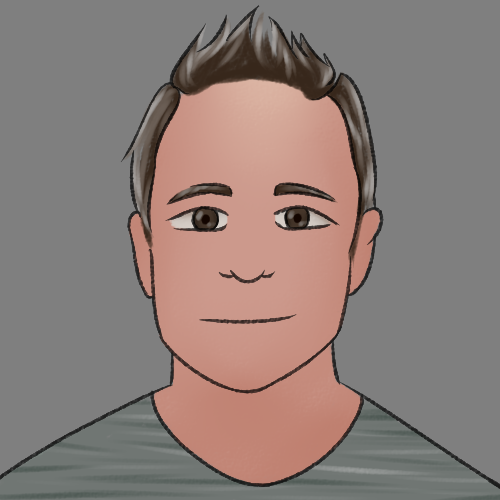
[Kyle Kozloff] and I designed and wrote – story, script, all the way down to dialogue – for the final conflict. When you finished all of those lands, then you do the final conflict, and you go to the castle. You battle – like Prince Phillip did – through all the briar patch, fight the dragon, go up to the very top. The spindle on the spinning wheel was there.
It’s like you were there in that final conflict, right? And there’s some kind of moral issue, that was gonna be worked in.